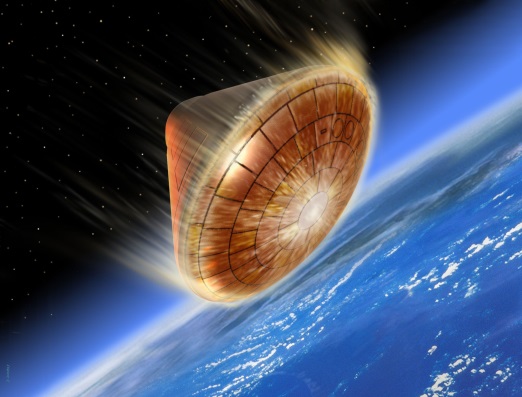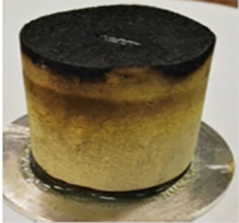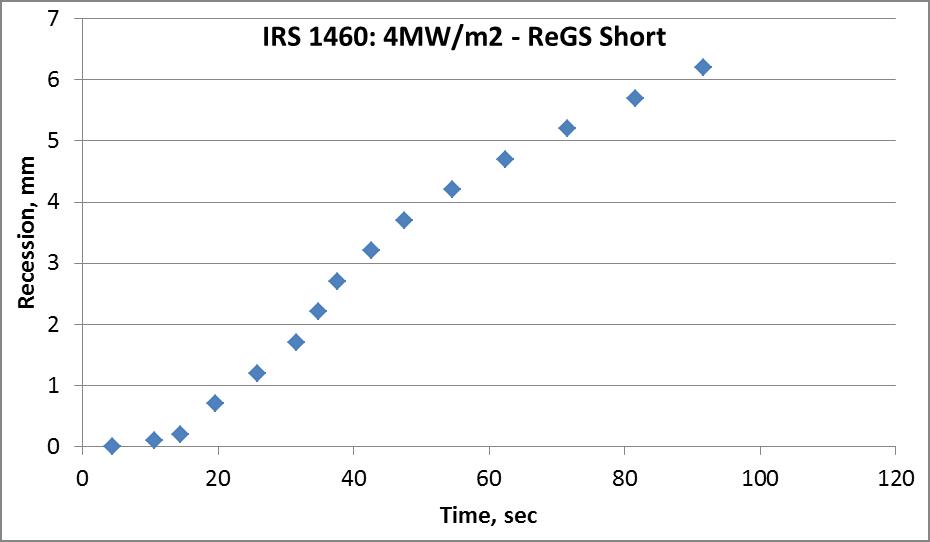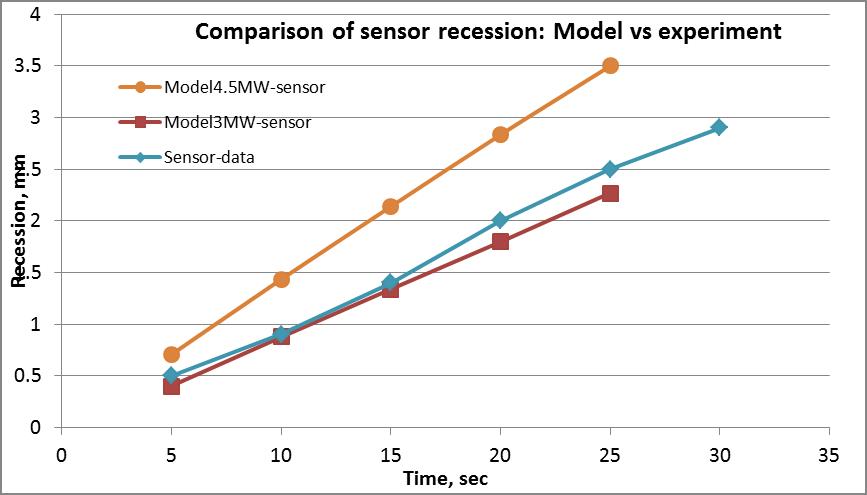ReGS is a European Space Agency (ESA)-funded project for the development of a sensor to measure and monitor in real time the recession of ablative Thermal Protective Systems of spacecraft re-entering the atmosphere at very high velocities. The ReGS sensor is unique worldwide as it offers an easy and reliable method for measuring the actual recession behaviour of TPS ablative shields and can thus enable more accurate and reliable sizing of TPS for any capsule entering an atmosphere such as the Orion capsule (artist’s impression, right).
The two current NASA TPS recession sensors HEAT and ARAD are not considered to be reliable due to their reliance on the ablator char for a conductive path. The large amount of flaws and cracks (and swelling in some cases) that appears on the TPS surface during ablation makes it very difficult to sustain a conductive path via the char during recession. In addition, these sensors are not strictly measuring the recession, but the movement of the temperature front through the ablating material.
The ReGS sensor developed in ACCL is based on a very simple principle: The resistance of a metal grid increases as its overall length decreases.

In order to compensate for fluctuations in temperature, a metallic foil is mounted parallel to the grid whose own signal allows for temperature compensation. The nett signal is this given by the difference between the two signals. The grid and foil are protected and electrically insulated by a high temperature silicate glue and embedded into the ablator inside a split cylindrical plug, as shown in the photo on the far left.



Plasma Jet tests of the ReGS sensor
Plasma jet tests using short sensors in ZURAM ablator were carried out at the PWK facility of Stuttgart University (Institute of Space Systems). The maximum heat flux used was 4MW/m2 and the sensors were tested up to about 94 seconds successfully monitoring the recession of the ZURAM over the whole duration of the tests. The recession reconstruction of one of the tests is shown on the left.
After an initial incubation period (due to the development of pyrolysis of the phenolic), the results show that the rate of recession reaching a maximum of about 0.15mm/sec at about 30 sec. The recession rate then starts to gradually decrease at about 30-35 seconds, possibly due to the depth of recession which means that the specimen is now that much further away from the plasma.
An outstanding problem with the ReGS sensor is its premature recession, especially after a few seconds

FEA Modelling of ablation
Phenomenological Modelling of the recession of a ZURAM-type ablator has enabled to develop a first-order prediction of the recession and compare with that of the ReGS sensor. The results show that it is possible to predict recession of the sensor using a simple, phenomenological model (right)
The 3MW/m2 model predictions (FEA) for the recession of ZURAM and the sensor appear to be in good agreement with the experimental data, providing an indication that for flame-burn tests, the actual flux on the surface is (just above) 3MW/m2 as shown at the left.
The results are promising and the work is continuing with modelling using Computational Fluid Dynamics (CFD)

